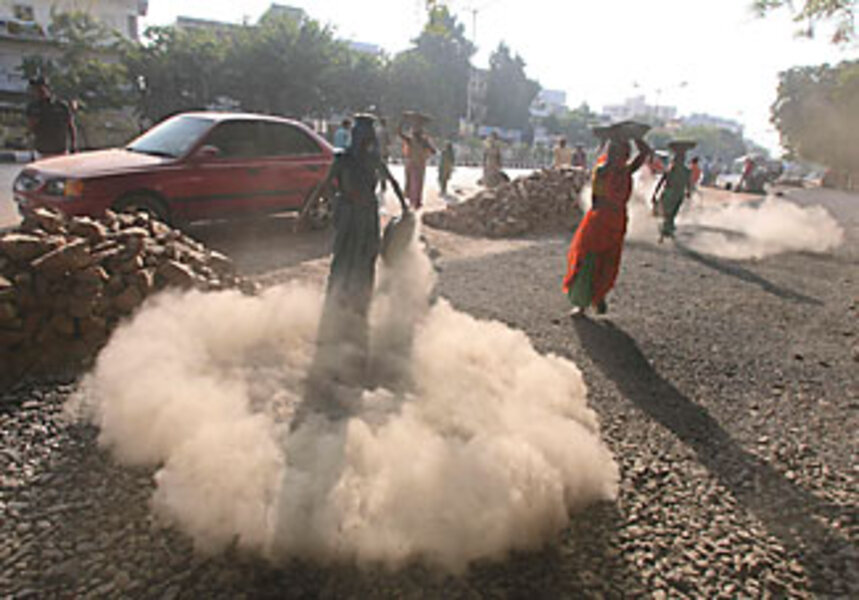Ahead of Copenhagen climate talks, India softens its carbon stance
Loading...
| New Delhi
Indian Prime Minister Manmohan Singh, whose country is the world's number four greenhouse gas emitter, ended days of speculation Saturday by saying that he would attend the landmark climate change talks that open Monday in Copenhagen, Denmark.
The move follows his country's announcement Thursday it would aim to slow the growth of its carbon dioxide emissions over the next decade and beyond – signaling a softening of its hard-line stance on climate change negotiations.
India's environment minister, Jairam Ramesh, told parliament Thursday evening India would reduce its "carbon intensity" – the amount of carbon dioxide emitted for each unit of gross domestic product (GDP) – by up to 25 percent from 2005 to 2020.
He made clear this improvement would be made on a voluntary basis, and he reiterated that India, Asia's third biggest consumer of energy, would not agree to any legally binding emissions targets. But environmentalists nonetheless welcomed it.
"We would argue this is a positive step forward; a show of positive intent," says Ankar Ganguly of Greenpeace India. "In the past, developing countries have been used as a shield by the rest of the world to hide behind as an excuse for inaction, but this is saying, 'Let's move things forward, let's talk.'"
A replacement for Kyoto?
The two-week summit in Copenhagen is aimed at replacing or extending the 1997 Kyoto Protocol, which expires in 2012. But ahead of the talks, developed and developing countries have disagreed on issues including targets on emissions and financial aid from rich countries to help poorer countries mitigate the effects of global warming.
India has made its position clear: to fuel the economic growth needed to lift millions of people out of poverty, its emissions must rise. Like China, India argues that rich, industrialized nations rather than developing nations bear historic responsibility for climate change.
Recently, the country has softened its rhetoric, announcing extensive plans to expand its use of solar power and other alternative sources of energy. But until now, it had resisted quantifying its hopes on fuel efficiency.
India's new environment minister
Thursday's announcement was perhaps prompted by China, which offered last month to cut its output of carbon dioxide per unit of gross domestic product (GDP) by 40 percent from 2005 levels to 2020. The US has said it will try to reduce emissions during this period by 17 percent.
But Mr. Ramesh, who was appointed environment minister after May's general elections, has also influenced Indian policy. He has fought to soften New Delhi's international negotiating position ahead of Copenhagen.
India has long sought to deflect international pressure for it to act on climate change by reminding the world how low its per capita emissions are.
Low per capita emissions
The Indian government says the average Indian produces one ton of carbon dioxide a year, compared with about 20 tons per person in the US. Its 1.2 billion-strong population is what makes it one of the world's leading emitters of greenhouse gases. And environmentalists say its future growth has alarming implications for climate change.
Ramesh has broken the Indian mold by arguing that India must stop focusing on its low per capita emissions, which he describes as "an accident of history" connected to its vast population. "It is not a credit for us," he told parliament Thursday. "Our single biggest failure in the last 60 years is our inability to control our population growth rate."
He said the reduction in emissions intensity would be achieved by new fuel efficiency vehicles and the increased use of clean coal technology in power generation.
India's carbon intensity had dropped by 17.6 percent from 1990 to 2005, he said, and that experts agreed further reduction was possible.





